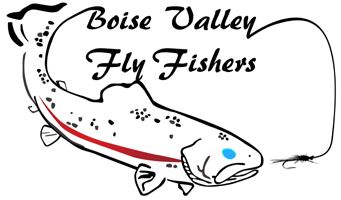--By Scott Blackhurst
With the change of the seasons, comes a change of flies. BWO, or Blue-winged Olive is a collective term used by anglers in fly fishing to identify a broad array of mayflies having olive, olive-brown bodies and bluish wings in the adult form. BWOs are in the family Baetidae with a lifecycle of: egg, nymph, emerger, adult, and spent adult. They hatch twice a year, spring and fall, with the spring typically having larger bugs (s16-18) with the smaller bugs in the fall (s20-22).
Material List – Emerger
 You need to decide if you are going to tie bugs for the fall or spring. Larger bugs for the spring and smaller bugs for the fall.
You need to decide if you are going to tie bugs for the fall or spring. Larger bugs for the spring and smaller bugs for the fall.
- Hook – a curved hook is preferred
- Thread – 8/0 olive or olive dun
- Tail – Wood Duck – around 5 fibers
- Body – stripped olive peacock herl
- Thorax – olive dubbing. I like to use Trout Hunter BWO, but any olive dun dubbing will work
- Wing Case – pheasant tail + UV Resin
- Legs – Hungarian Partridge
Material List – Nymph
 Hook – any type of straight hook
Hook – any type of straight hook - Weight – optional
- Thread – olive in 8/0 or olive dun
- Tail – Wood Duck – around 5 fibers
- Body – Turkey quill tied in to get the raised section of the quill out
- Thorax – olive dubbing. I like to use Trout Hunter BWO, but ay olive dun dubbing will work
- Wing Case – pheasant tail + UV Resin
- Legs – Hungarian Partridge or the tips of wing case
Tying Instructions
Whichever version of fly you are going to tie, you need to decide what size, and whether you want the fly weighted or you are going to use some spit shot to get your fly down. This will also depend on the type of fly you are tying. Emerger’s are usually higher or closer to the surface than nymphs and are better to be unweighted.
I usually start the thread where the thorax is going to be tied. I stop around the point of the hook and start tying in the tail, then keep tying back to where the barb of the hook would be.
Depending on what version you’re tying, tie in your body material. On the stripped peacock herl on one side of the hurl there is a small black section with the rest of the herl being the stained color, in this case, olive. You want the black facing towards the back of the back of the fly. On the nymph, it’s the same concept. The raised section of the quill goes towards the back, so when you wrap up the hook, the raised section will be visible. When you get up to the thorax section, tie off the material that was used.
Tie in a clump of pheasant tail fibers. I tie them in with the tips of the fibers facing the hook eye. On an emerger, cut the tips off, and on a nymph use the tips of the pheasant tail for the legs, so you’ll need to measure them so they aren’t too long.
After tying in the pheasant tail, twist on some dubbing and make a nice, full thorax, it should be bigger than body. If you are using the pheasant tail for legs, do nothing here, if you are using Hungarian Partridge for legs, prep the feather to tie in, making sure it isn’t too long. The legs should be around the thorax area. Cut off the waste part of feather. If you are using the pheasant tail for legs, split the fibers in half trying to make both side equal, take your fingernail and push the fibers down. Pull the wing case up and over the eye of the hook, splitting the leg fibers of whatever you used. Tie the wing case down and cut off the waste material. Make a head and whip finish.
After the fly is complete, use UV resin over the wing case. Be careful so it doesn’t absorb in through the pheasant tail and get into the legs. You can do several coats of UV resin if you need.

